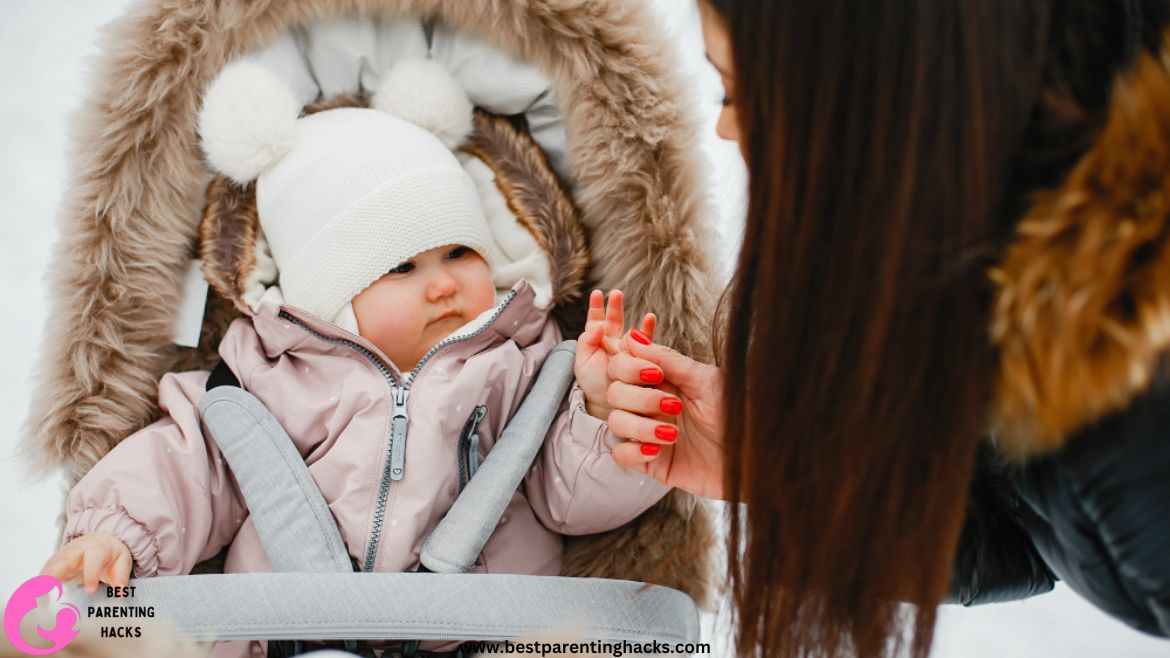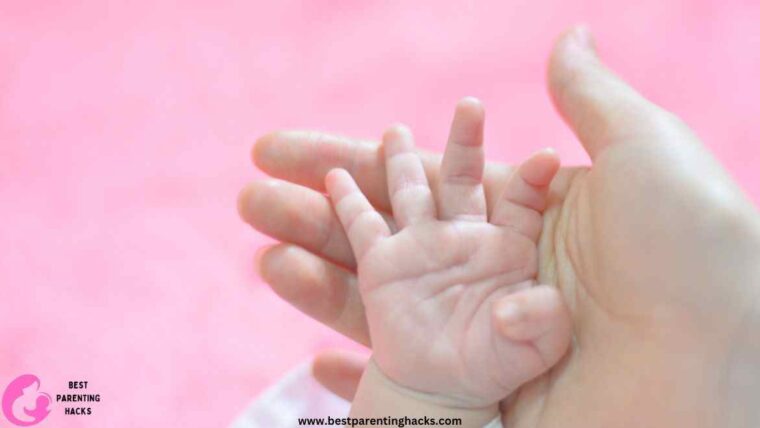Table of Contents
Ensuring the safety and comfort of our children can be quite challenging, for parents particularly when the weather conditions are unfavorable. Parents frequently wonder, “Is 50 degrees too cold for a baby?” Especially those who are spending their first winter with a newborn. This article seeks to address this issue by providing a guide to assist parents in navigating the hurdles of keeping their newborns warm in inclement weather. It accomplishes this by combining experience and counsel.
There is no simple “yes” or “no” response to the question of whether 50 degrees is too chilly for a newborn. It mostly depends on several variables, including the infant’s health, how long they spend outside, and how well they are suited for the weather. In general, 50 degrees Fahrenheit may be a safe and comfortable temperature for a newborn if they are dressed appropriately and take safety precautions. But it’s important to know the ins and outs of infant dressing, assess your child’s comfort level, and choose when it’s best to stay indoors.
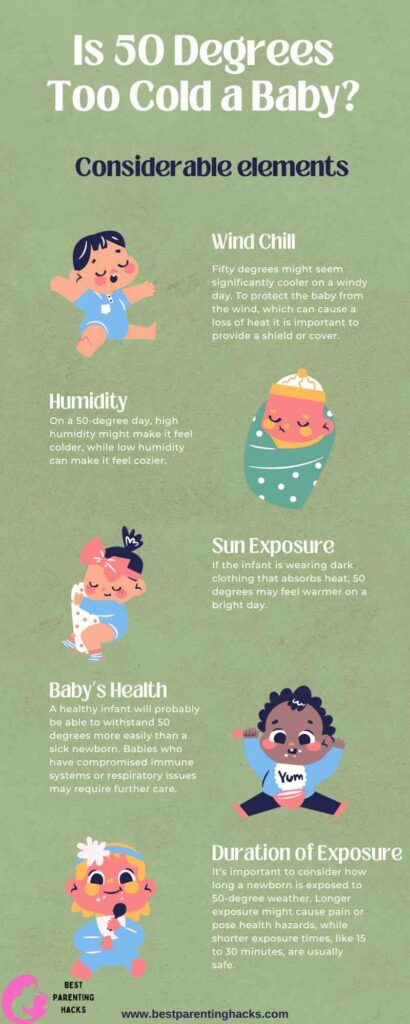
Is 50 Degrees Too Cold a Baby?
Understanding the unique circumstances of the day and the infant’s demands is necessary to decide if 50 degrees is too chilly for a newborn. Even though 50 degrees Fahrenheit is often regarded as a benign temperature, it can seem considerably colder to a baby, especially a newborn. Making sure the infant is clothed adequately for the weather and is not left out in the cold for an extended period is crucial.
Considerable elements include:
1. Wind Chill: Fifty degrees might seem significantly cooler on a windy day. To protect the baby from the wind, which can cause a loss of heat it is important to provide a shield or cover.
2. Humidity: On a 50-degree day, high humidity might make it feel colder, while low humidity can make it feel cozier.
3. Sun Exposure: If the infant is wearing dark clothing that absorbs heat, 50 degrees may feel warmer on a bright day.
4. Baby’s Health: A healthy infant will probably be able to withstand 50 degrees more easily than a sick newborn. Babies who have compromised immune systems or respiratory issues may require further care.
5. Duration of Exposure: It’s important to consider how long a newborn is exposed to 50-degree weather. Longer exposure might cause pain or pose health hazards, while shorter exposure times, like 15 to 30 minutes, are usually safe.
You Might Also Like to Read: Baby Hit Head on Hardwood Floor. What Should I Do?
Understanding Baby’s Body Temperature Regulation
During their early months, a baby’s special system for controlling their body temperature is still growing. Babies can lose heat roughly four times as quickly as adults do. This is because they are more vulnerable to the cold due to their bodies’ greater surface area relative to their weight. In 50-degree temps, this frailty necessitates special caution.
1. Surface Area to Weight Ratio: Compared to adults, babies have a larger surface area to weight ratio. Due to the increased surface area of their bodies exposed to the chilly air, they lose heat more quickly.
2. Underdeveloped Thermoregulation: An infant’s capacity to control body temperature is incomplete. As a result, they are less effective in retaining heat in the winter and shedding heat in the summer.
3. Brown Fat Distribution: Brown fat, a kind of fat found in babies, is essential for regulating body temperature. Nevertheless, compared to older children and adults, their distribution and quantity of this fat are lower, which impacts their capacity to remain warm.
4. Limited Movement: Babies don’t move around a lot, especially when they are newborns. Their lack of mobility can hasten the loss of heat since physical activity produces heat.
You Might Also Like to Read: I Accidentally Used Disinfectant Wipes on My Baby. What Should I DO?

Dressing Your Baby for 50-Degree Weather
Layers are key when dressing your infant for 50-degree temperatures. Start with a onesie made of cotton or another light material. If you want to spend a lot of time outside, start with a windproof and waterproof outer layer and finish with a warmer middle layer, such as a fleece jacket. Remember to include warm socks or booties, mittens, and caps.
Things to think about when clothing your child:
1. Layering: To trap heat and make it simple to regulate according to your baby’s comfort, wear many layers of clothes.
2. Material: For the base layer, use breathable materials like cotton, and for the intermediate layer, use insulating materials like fleece.
3. Fit: Verify the garments’ proper fit. Not enough clothes might make it difficult to move about, and not enough clothing can make it difficult to retain body heat.
4. Accessibility: Take into account how simple it is to take off layers when your infant becomes too warm or to change their diaper.
5. Weather Protection: To keep your infant safe from the elements, wear an outer layer if the weather is windy or wet.
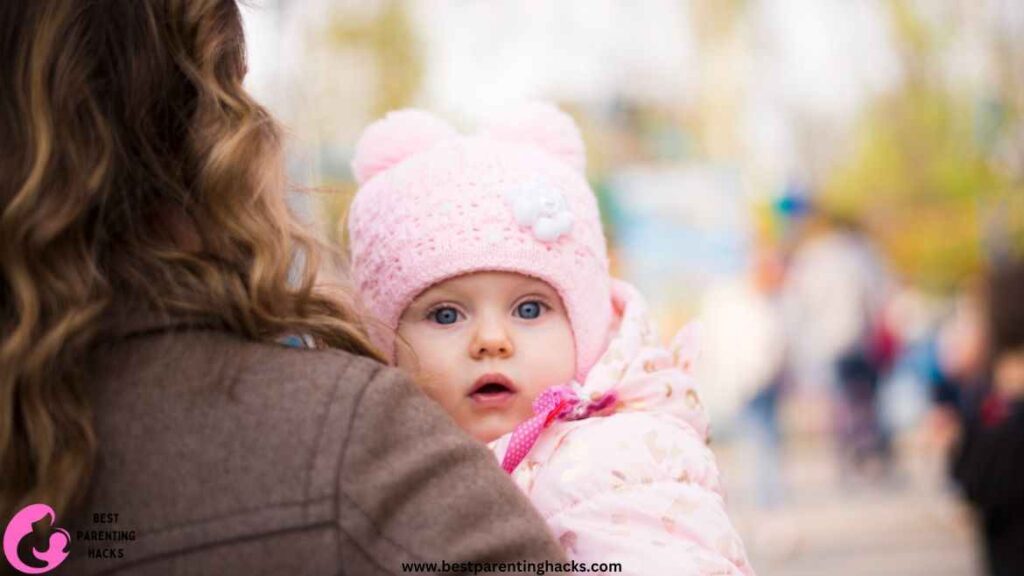
Outdoor Safety Tips
1. Monitor for Discomfort: Make sure your child isn’t experiencing any discomfort by checking for symptoms like shivering or red skin.
2. Limit Time Outdoors: Don’t spend too much time outside. Keep exposure to little more than 15 to 30 minutes, and frequently go back inside for warmth.
3. Protect from the Wind: Put your infant in a stroller with a weather shield or outfit them in wind-resistant gear.
4. Stay Prepared: When taking your infant outside in the winter, always pack additional clothing and emergency supplies like blankets.
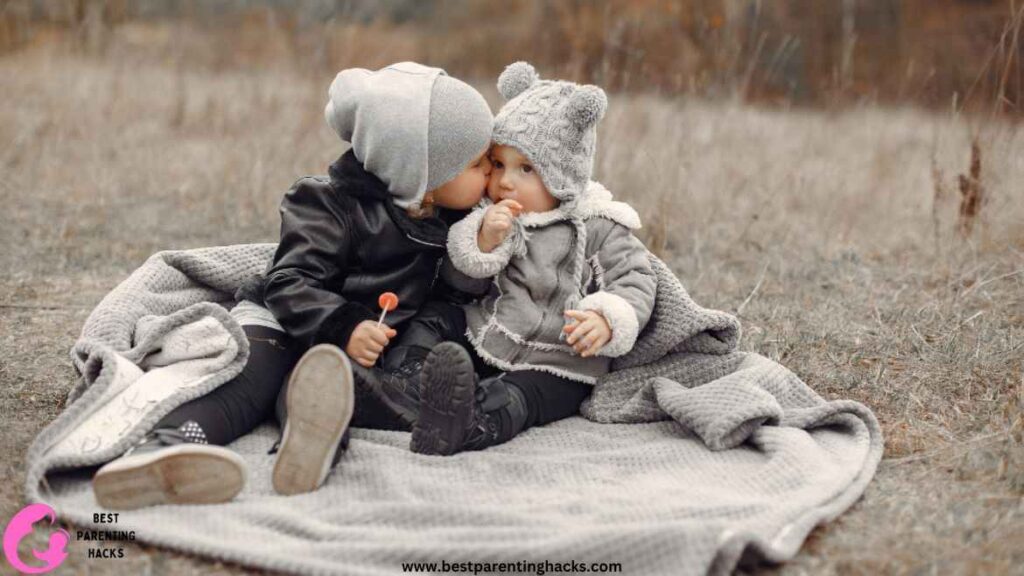
Indoor Considerations at 50 Degrees
Keeping your house at a pleasant temperature is essential. A newborn should sleep in a room that is between 68 and 72 degrees Fahrenheit. Choose breathable materials for your sleepwear, such as cotton, and modify the layers according to the temperature in your house. Make sure the sleeping quarters are secure; steer clear of hot spots and loose bedding.
When to Avoid Going Outside
When the temperature falls sharply below fifty degrees, especially with additional elements like wind or moisture, stay indoors with your infant. Recognize the warning indications of frostbite and hypothermia, which include pale skin, fatigue, and a feeble scream. Please get medical assistance right away if you think you may have any of these problems.
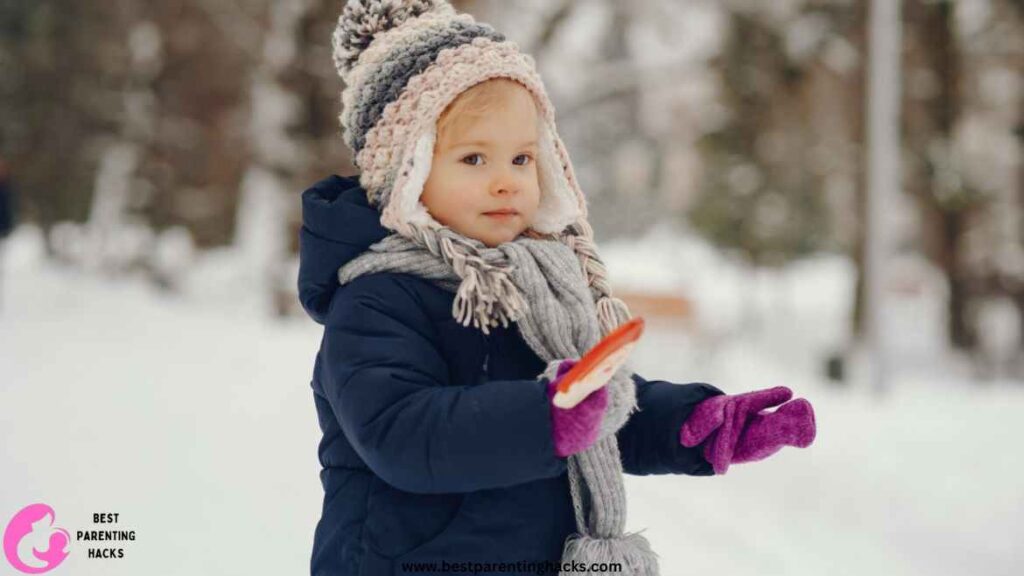
Conclusion
Managing the difficulties of parenthood involves knowing what to wear and how to take care of your child in different weather situations. Although a newborn may usually be kept safe at 50 degrees with the correct safety measures, as a parent you should always follow your gut. It’s preferable to err on the side of caution if anything feels off. Keep in mind that each infant is unique, so what suits one might not suit another. Pay close attention to your infant’s cues, and if you have any worries, speak with your pediatrician.
FAQs
1. How can I determine whether my child is overly cold?
• Your baby may be too chilly if their skin feels cool to the touch, especially around their core, or if they are fussing more than normal.
2. Which fabrics work best for infant clothing in the fall and winter?
• Cotton is an excellent base layer material because it breathes well, while fleece and wool are superior for insulation.
3. Is it safe to take my baby outside in 50-degree weather?
• Absolutely, but make sure they’re appropriately attired and restrict their time outside. Babies are particularly susceptible to variations in temperature.
4. In 50-degree temperatures, how many layers should my infant wear?
• Generally speaking, you just need a base layer, an insulating layer, and an outer layer of protection. Adapt according to how your infant reacts.
5. What symptoms of hypothermia should I be aware of in my infant?
• Keep an eye out for weak crying, shivering, fatigue, and chilly skin. If you think someone is experiencing hypothermia, it’s important to call for help
6. Does a newborn need a hat in 50-degree weather?
• A hat is a necessary accessory for newborns since they lose a lot of heat via their heads.
7. How long can my kid stay outside in 50-degree temperatures without being hurt?
• Short durations, like 15 to 30 minutes, are usually fine. Check your baby’s comfort level frequently.

